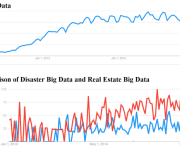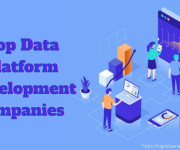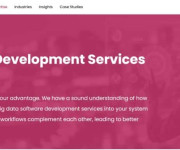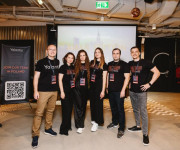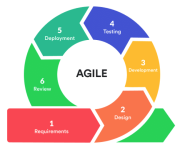Top 7 Trends Shaping the Future of Cloud Security
Cloud technology keeps growing faster than anyone expected. Businesses rely on it for everything—from storing data to running daily operations. But as companies move more systems online, security concerns grow too. Hackers are more skilled, threats are more complex, and protecting sensitive data has become a major challenge.
Organizations can’t just rely on old security methods anymore. They need smarter, stronger, and more flexible ways to protect their digital environments. The good news is that cloud security is evolving quickly. New tools and methods are helping companies stay one step ahead. Here are seven key trends that are shaping the future of cloud security.
1. The Rise of Zero Trust Architecture
The Zero Trust model is changing how businesses think about security. Instead of assuming users inside the network can be trusted, Zero Trust verifies every access request. No one gets free access—not employees, not apps, and not connected devices. Every request is checked before permission is given.
This model reduces risks caused by insider threats and stolen credentials. Companies are using identity-based authentication, network segmentation, and continuous monitoring to keep their systems secure.
Organizations using a data cloud setup are also embracing Zero Trust principles. Since a data cloud unifies information from multiple sources, it must be protected from all sides. Zero Trust helps ensure every connection to that cloud—whether from a user, an app, or a system—is verified and secure. It’s an approach built on control, not assumption, and it’s becoming a global standard for modern cloud environments.
2. AI and Machine Learning in Threat Detection
Artificial intelligence and machine learning are now essential tools in cloud security. These technologies don’t just react to problems; they predict them. By studying patterns of normal activity, AI can quickly notice when something looks suspicious.
For example, if an employee’s account suddenly tries to access data at odd hours or from another country, AI systems can detect it in seconds. Machine learning helps refine these alerts over time, reducing false alarms and improving accuracy.
These tools are especially useful in large organizations where human teams can’t monitor everything manually. AI-driven analytics offer faster response times and real-time protection, making it easier to stop threats before they cause damage. Companies that combine AI with automation can detect attacks earlier and reduce the time it takes to fix issues.
3. Multi-Cloud Security Management
Many businesses use more than one cloud provider to handle different needs. This approach offers flexibility and cost control, but it also adds complexity. Each provider has its own security rules and tools, and managing them all can get messy.
To solve this, companies are adopting centralized security management platforms. These tools give IT teams a single dashboard to monitor threats across all clouds. It helps them apply consistent security policies, track user activity, and respond to alerts faster.
Strong visibility across all environments reduces confusion and helps teams avoid mistakes. It also makes compliance easier since the same security rules apply everywhere. As more companies adopt multi-cloud setups, this type of unified security management will be a must-have.
4. Cloud-Native Security Tools
Traditional security tools were designed for on-premises systems. Many of them don’t work well in the cloud because they weren’t built for that kind of flexibility. That’s why cloud-native security tools are now taking over.
These tools are made specifically for cloud environments. They can monitor APIs, containers, and microservices in real time. They adapt easily as applications scale up or down. For instance, a container security solution can automatically detect configuration changes and apply protection instantly.
Cloud-native tools improve visibility, reduce manual work, and keep up with the fast pace of cloud development. Since they integrate smoothly with existing cloud platforms, they make it easier to maintain strong security without slowing down innovation.
5. Data Privacy and Compliance Focus
Data privacy isn’t optional anymore. Governments and industries are enforcing strict rules to protect user data. Laws like GDPR, HIPAA, and CCPA require companies to manage information responsibly and stay transparent about how data is used.
Cloud providers are responding by offering compliance features built into their platforms. Companies can now track data locations, manage permissions, and generate reports to show compliance. These steps build trust with customers and reduce legal risks.
Strong privacy policies also protect brand reputation. A single breach can cause years of damage. By combining privacy measures with clear data governance, businesses show they take security seriously. Customers notice that effort and are more likely to stay loyal.
6. Automation and DevSecOps Integration
In the past, security checks were often handled at the end of software development. That made it harder to fix issues without delaying projects. DevSecOps changes that by bringing security into every stage of development.
Automation tools now scan code, identify risks, and apply fixes before deployment. Developers and security teams work side by side instead of in silos. This approach saves time and money because vulnerabilities are found early.
It also builds a culture of shared responsibility. Everyone involved in the project understands that security isn’t an afterthought—it’s part of the process. Automation ensures consistency, while continuous testing keeps systems reliable.
7. The Growing Role of Identity and Access Management (IAM)
Identity and Access Management is a critical part of cloud security. It controls who can access specific systems, files, or applications. Without strong IAM, unauthorized users could easily slip through and cause damage.
Modern IAM solutions now use adaptive authentication. That means access rules change based on context—like device type, location, or time of login. If a user tries to sign in from an unknown device, the system can request additional verification.
Multi-factor authentication (MFA) is also becoming standard. Combining passwords with biometric data or one-time codes adds an extra layer of safety. Companies are also automating user provisioning, so access permissions update automatically when employees change roles or leave the company.
Cloud security continues to evolve as technology advances. Companies are realizing that protecting their digital assets requires continuous learning and adaptation. These seven trends highlight how the focus is shifting toward automation, intelligence, and proactive defense.
The cloud will always bring new challenges, but it also offers endless opportunities for growth. Businesses that stay informed and flexible will be better prepared to face future threats. The future of cloud security looks promising for those willing to evolve with it.
















